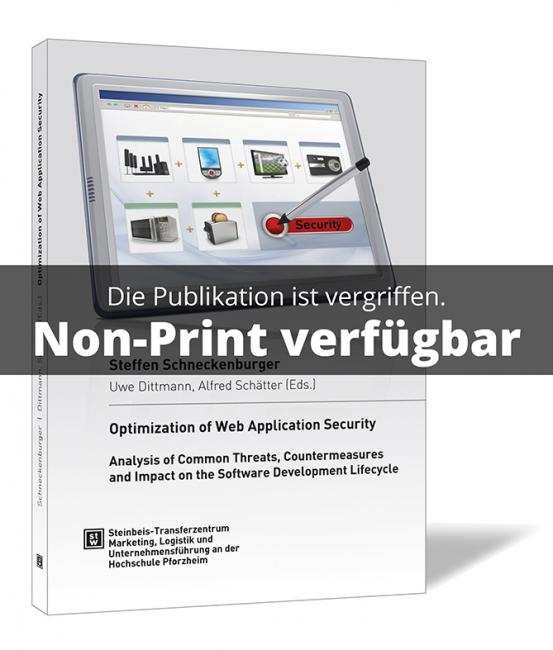Blick ins Buch | Cover als JPEG
The intention of the book is all about creating awareness in terms of web application security and to support the reader with several examples as well as best practices through the development of secure web applications. Software developers and their customers often do not realize the importance of these requirements within a contract or at least define them superficially. For this reason the objective of the book is to develop an annex comprising common threats and countermeasures as well as necessary adjustments of the software development lifecycle in terms of security to establish a common basis of security understanding between developers, managers, customers and other stakeholders. As a result this book is directed to anyone from developer to decision-maker who wants to get an overview of current web application security flaws and corresponding countermeasures.
The book introduces current web application security threats and elaborates countermeasures in order to avoid or at least to reduce the impact of these flaws. In addition the security software development lifecycle of Microsoft is evaluated in order to avoid flaws in the first place.
Several critical web application vulnerabilities are identified based on intensive research. They were individually ranked according to the related risks. The top five risks elaborated are the following: Social Engineering, (Blind) SQL Injection, Brute Force, Insecure Direct Object Reference, Security Misconfiguration.
Die Publikation ist auch als E-Book erhältlich.
Eine Publikation des Steinbeis-Transferzentrum Marketing, Logistik und Unternehmensführung an der Hochschule Pforzheim
Prof. Uwe Dittmann wurde 1990 zum Professor im Studiengang Logistik an die Fachhochschule Pforzheim berufen. 1995 wechselte Professor Uwe Dittman als Gründungsdekan des Fachbereichs Wirtschaftsingenieurwesen in den Hochschulbereich Technik. Daneben leitet er seit 2004 den Fakultäten- und Fachbereichstag Wirtschaftsingenieurwesen, der die Interessen aller Wirtschaftsingenieur-Studiengänge in Deutschland und den angrenzenden Ländern vertritt und den Hochschulqualifikationsrahmen des Fachgebiets definiert hat und seither stetig weiterentwickelt. Ebenfalls 1995 gründete er das Steinbeis-Transferzentrum Marketing, Logistik und Unternehmensführung an der Hochschule Pforzheim, als dessen Leiter er seit dieser Zeit fungiert. 2014 folgte die Gründung und Leitung des Steinbeis-Innovationszentrums 2 Digital Business. // Stand: 04/2020
Prof. Alfred Schätter absolvierte sein Studium zum Diplom-Informatiker an der Universität Karlsruhe. Danach arbeitete er dort als Wissenschaftlicher Mitarbeiter und anschließend als Systementwickler IT in der Industrie. Seit 1990 ist er als Professor in verschiedenen Bereichen an der Hochschule Pforzheim tätig. Er legt den Fokus seiner Tätigkeiten auf Geschäftsprozessmanagement, Informations- und Kommunikationstechnologien, Internetportale, Systementwicklung, Web und App Design. // Stand: 07/2015

